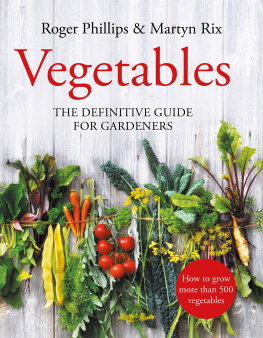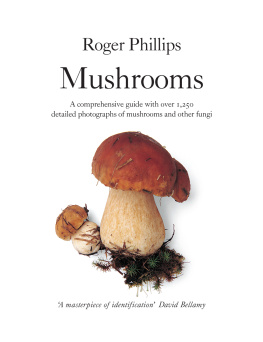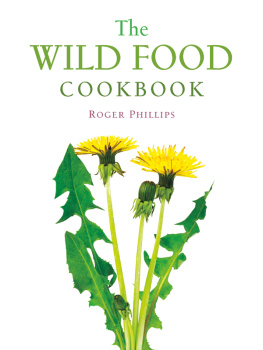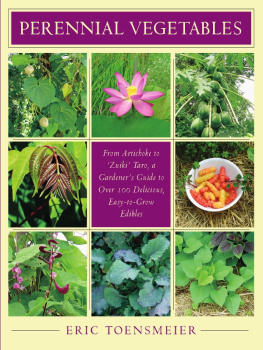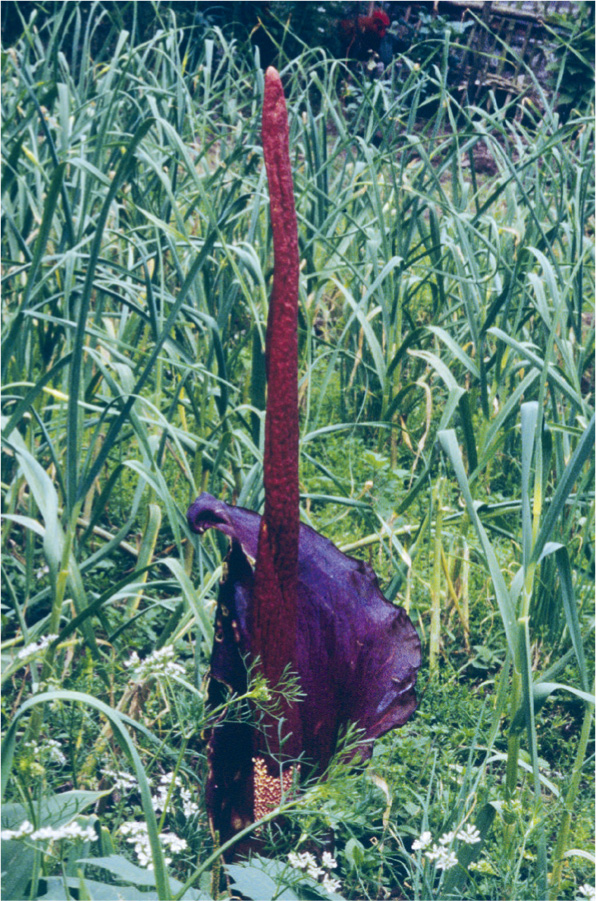Contents
Guide
Preface to this Edition
Vegetables have seldom been more popular! Whether you are a first-time grower, or a more experienced gardener, we have sought to inspire you by describing and illustrating a selection of the amazing variety of vegetables that can be grown in gardens of all sizes, from huge kitchen gardens, through smaller suburban and town gardens and allotments to containers and even pots on windowsills.
In his Preface to the 1885 English edition of The Vegetable Garden by the French nurserymen Vilmorin-Andrieux, that excellent and opinionated gardener, William Robinson, remarked on the movement towards diet reform and the greater use of the vegetable world for human food. One would hardly be surprised to hear this opinion voiced today, thanks to the current interest in vegetarian and vegan diets.
Introduction
In this book we illustrate over 500 different vegetables; we have concentrated on those suitable for temperate climates, but have also covered some which require greenhouse cultivation in areas which frequently experience cool summers, such as the British Isles, northern Europe or the extreme northeast of North America.
Since the first edition was published over 25 years ago, we have experienced some climate change, with the result that crops previously marginal in temperate gardens have become increasingly viable, so we have added some of these. For this edition of the book, we have added many new photos; on laid-out shots, the small circle represents 1 centimetre. As in previous editions, the majority of pictures were taken by Roger Phillips or Martyn Rix, but we also wish to thank those people who have kindly supplied us with additional photographs. Their names are acknowledged .
A selection of Chinese vegetables, usually quick and easy to grow, and popular in North American and European cooking, are also included. Edible grains such as wheat and barley, or oil seeds such as rape, which are nearly always grown as field crops, rather than in the vegetable garden, are not included, although sweetcorn or maize (also of course a field crop) finds a place here as it can be grown on a small scale.
The Order
The vegetables are arranged in families and the families in a traditional botanical order, beginning with the Cruciferae (now often called Brassicaceae), which includes cabbages, turnips and radishes, and ending with the monocotyledons, including onions and edible grasses such as sweetcorn. DNA studies in the last 20 years have resulted in major advances in our knowledge of the probable evolution of plants, and most systems begin with the gingers, grasses etc, but the main families to which vegetables belong are largely unchanged.
For readers unfamiliar with this system, all plants are listed in the alphabetical index at the end of the book; however, it is often of interest to see the relationship of one group of vegetables to another, e.g. celery, parsnips, carrots, parsley and fennel all belong to the family Umbelliferae and many people find that to know this adds to their enjoyment.
The Families
The plant families from which vegetables have been developed are listed below in alphabetical order, with notes on which parts of the plant are naturally edible or have been developed to be more rewarding. As will be seen, the Chinese have been particularly innovative in developing, by selection, different vegetables from the same plant. Europeans have on the whole been less creative, only beet and the common cabbage having been developed into several distinct vegetables.
The families now follow the Angiosperm Phylogeny Group version 14 website 2020, as set out by P.F. Stevens and other authors. Some family names have changed; we have quoted both the old and the new names. The so-called new names were mostly coined in the 19th century, so that the name was based on an important genus; for example, the old Latin name of the Celery family, Umbelliferae Juss., dates from 1789, while Apiaceae, usually used in modern works, was coined by John Lindley in 1834.
Important Families
Amaryllidaceae () Onions, shallots, garlic, leeks and chives have often been put in a separate onion family Alliaceae or within a very extensive Liliaceae. In most alliums it is their bulbs which are eaten, but in leeks and spring onions the elongated leaf bases are the edible parts, and the Chinese eat the blanched flowering stems and leaves of both garlic and Chinese chives. The characteristic onion and garlic smells are caused by alkyl sulphides which are found throughout the genus Allium and in other genera of the onion family such as Tulbaghia. Most other Amaryllidacae such as Narcissus and Amaryllis are not edible.
Amaranthaceae, including Chenopodiaceae () Amaranthus itself includes Chinese spinach, and grains such as A. caudatus (Inca wheat). Chenopodium has quinoa, C. quinoa. Spinach and leaf beet are the most common green vegetables in this family. Beet has also been developed as sugar beet and beetroot, in which the edible part is the swollen base of the stem. In Swiss chard the leaf-stalks are enlarged and succulent. Less common vegetables include Good King Henry and orach. Many of these leaf vegetables, particularly spinach, are very high in vitamins and minerals such as iron, and should be cooked so that the water is absorbed, not thrown away.
Compositae or Asteraceae () The daisy family contains such widely different vegetables as the Jerusalem artichoke, with its potato-like tubers, and the Andean vegetable Yacon; the Globe artichoke with its edible thistle-like flower heads; chicory with its blanched leaves, and leafy lettuces. The Chinese have developed celtuce or asparagus lettuce, with a thickened edible stem, while in France dandelions have been improved by selection and are grown for salad, the plants looking not unlike the weed though leafier and tasting less bitter. Sunflowers are grown for their large, edible seeds, and are attractive to pollinators, including both honey and bumble bees. The tubers of Jerusalem artichoke and yacon contain inulin, rather than the commoner starch or sugar, and are suitable for diabetics, or as a substitute for potatoes.
Cruciferae or Brassicaceae () The cabbage family contains a great range of vegetables, developed in both Europe and China. In most it is the leaves (cabbage), flowering stems (cauliflower) or swollen roots (radish) which are eaten, but there is a radish with edible fruits in central Asia. In Europe, rape is grown for the oil in its seeds, and the same species has been developed into the turnip, but in China it has also been developed into other leafy vegetables.

Vegetable terraces in Madeira

A greengrocer on the lake in Kashmir

